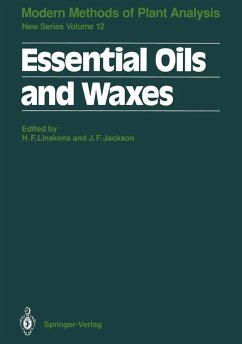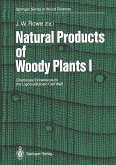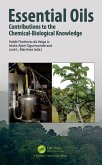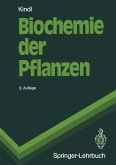Essential Oils and Waxes (eBook, PDF)
Redaktion: Linskens, Hans F.; Jackson, John F.
104,95 €
104,95 €
inkl. MwSt.
Sofort per Download lieferbar

52 °P sammeln
104,95 €
Als Download kaufen

104,95 €
inkl. MwSt.
Sofort per Download lieferbar

52 °P sammeln
Jetzt verschenken
Alle Infos zum eBook verschenken
104,95 €
inkl. MwSt.
Sofort per Download lieferbar
Alle Infos zum eBook verschenken

52 °P sammeln
Essential Oils and Waxes (eBook, PDF)
Redaktion: Linskens, Hans F.; Jackson, John F.
- Format: PDF
- Merkliste
- Auf die Merkliste
- Bewerten Bewerten
- Teilen
- Produkt teilen
- Produkterinnerung
- Produkterinnerung

Bitte loggen Sie sich zunächst in Ihr Kundenkonto ein oder registrieren Sie sich bei
bücher.de, um das eBook-Abo tolino select nutzen zu können.
Hier können Sie sich einloggen
Hier können Sie sich einloggen
Sie sind bereits eingeloggt. Klicken Sie auf 2. tolino select Abo, um fortzufahren.

Bitte loggen Sie sich zunächst in Ihr Kundenkonto ein oder registrieren Sie sich bei bücher.de, um das eBook-Abo tolino select nutzen zu können.
This 12th volume of Modern Methods of Plant Analysis contains details of the analysis of essential oils from olive, thymus, tea, ginger, eucalyptus, garlic, mentha, cedar, juniper, as well as volatiles from spices, seasoning seaweeds, perfumes, liquores, and parts of the flower including pollen. Waxes in the soil conferring water repellency and leaf waxes are also included in this volume.
- Geräte: PC
- ohne Kopierschutz
- eBook Hilfe
- Größe: 32.77MB
Andere Kunden interessierten sich auch für
![Natural Products of Woody Plants (eBook, PDF) Natural Products of Woody Plants (eBook, PDF)]() Natural Products of Woody Plants (eBook, PDF)112,95 €
Natural Products of Woody Plants (eBook, PDF)112,95 €![Analysis of Nonalcoholic Beverages (eBook, PDF) Analysis of Nonalcoholic Beverages (eBook, PDF)]() Analysis of Nonalcoholic Beverages (eBook, PDF)40,95 €
Analysis of Nonalcoholic Beverages (eBook, PDF)40,95 €![Apocynaceae Plants (eBook, PDF) Apocynaceae Plants (eBook, PDF)]() Ravindra H. PatilApocynaceae Plants (eBook, PDF)120,95 €
Ravindra H. PatilApocynaceae Plants (eBook, PDF)120,95 €![Plant Essential Oils (eBook, PDF) Plant Essential Oils (eBook, PDF)]() Plant Essential Oils (eBook, PDF)152,95 €
Plant Essential Oils (eBook, PDF)152,95 €![Essential Oils (eBook, PDF) Essential Oils (eBook, PDF)]() Essential Oils (eBook, PDF)56,95 €
Essential Oils (eBook, PDF)56,95 €![Biochemie der Pflanzen (eBook, PDF) Biochemie der Pflanzen (eBook, PDF)]() Helmut KindlBiochemie der Pflanzen (eBook, PDF)36,99 €
Helmut KindlBiochemie der Pflanzen (eBook, PDF)36,99 €![Black cumin (Nigella sativa) seeds: Chemistry, Technology, Functionality, and Applications (eBook, PDF) Black cumin (Nigella sativa) seeds: Chemistry, Technology, Functionality, and Applications (eBook, PDF)]() Black cumin (Nigella sativa) seeds: Chemistry, Technology, Functionality, and Applications (eBook, PDF)191,95 €
Black cumin (Nigella sativa) seeds: Chemistry, Technology, Functionality, and Applications (eBook, PDF)191,95 €-
-
-
This 12th volume of Modern Methods of Plant Analysis contains details of the analysis of essential oils from olive, thymus, tea, ginger, eucalyptus, garlic, mentha, cedar, juniper, as well as volatiles from spices, seasoning seaweeds, perfumes, liquores, and parts of the flower including pollen. Waxes in the soil conferring water repellency and leaf waxes are also included in this volume.
Dieser Download kann aus rechtlichen Gründen nur mit Rechnungsadresse in A, B, BG, CY, CZ, D, DK, EW, E, FIN, F, GR, HR, H, IRL, I, LT, L, LR, M, NL, PL, P, R, S, SLO, SK ausgeliefert werden.
Produktdetails
- Produktdetails
- Verlag: Springer Berlin Heidelberg
- Seitenzahl: 337
- Erscheinungstermin: 6. Dezember 2012
- Englisch
- ISBN-13: 9783642840234
- Artikelnr.: 53090712
- Verlag: Springer Berlin Heidelberg
- Seitenzahl: 337
- Erscheinungstermin: 6. Dezember 2012
- Englisch
- ISBN-13: 9783642840234
- Artikelnr.: 53090712
- Herstellerkennzeichnung Die Herstellerinformationen sind derzeit nicht verfügbar.
Olive Oil Analysis.- 1 Introduction.- 2 Quality Tests of Olive Oil-Determination of Acidity and Oxidation.- 3 Sensory Evaluation of Olive Oil.- 4 Determination of Certain Constituents of Olive Oil.- 5 Moisture Determination.- 6 Determination of Soap Content.- 7 Olive Oil Adulteration - Adulteration and Genuineness Tests.- References.- Analysis of Essential Oils of Tea.- 1 Introduction.- 2 Isolation of Essential Oils.- 3 Separation and Identification of Essential Oil Components from Tea.- 4 Components of the Essential Oil.- 5 Pattern Analyses of Gas Chromatograms.- References.- Special Methods for the Essential Oils of the Genus Thymus.- 1 Introduction.- 2 Plant Material.- 3 Extraction.- 4 Analytical Methodology.- 5 Conclusions.- References.- Chemical Races Within the Genus Mentha. L..- 1 Introduction.- 2 Biosynthesis of Mentha Essential Oils.- 3 Chemical Races.- 4 Conclusions.- References.- Special Methods for the Essential Oil of Ginger.- 1 Introduction.- 2 Traditional Methods of Extraction, Separation, and Control.- 3 Modern Methods of Extraction, Separation, and Identification.- References.- GC-MS (EI, DCI, NCI, SIM) SPECMA Bank Analysis of Volatile Sulfur Compounds in Garlic Essential Oils.- 1 A Short Survey of the Chemistry of Garlic.- 2 Analytical Methods Used for Identification of Sulfur Compounds in Garlic Essential Oil.- 3 GC-MS Analyses of Two Garlic Essential Oils Originating from France (Provence) and Mexico.- 4 Conclusion.- References.- Analysis of Juniper and Other Forest Tree Oil.- 1 Introduction.- 2 Sample Collection.- 3 Oil Extraction.- 4 Chemical Analysis.- 5 Component Identification.- 6 Applications of Terpenoid Data.- References.- Cedar Wood Oil - Analyses and Properties.- 1 Introduction.- 2 Sample Collection.- 3 Oil Extraction.- 4 ChemicalAnalysis.- 5 Identification.- 6 Properties.- References.- Analysis of Croton Oil by Reversed-Phase Overpressure-Layer Chromatography.- 1 Introduction - Overpressure-Layer Chromatography as a Separatory Technique.- 2 Phorbol Ester Constituents of Croton Oil.- 3 Separation of the Phorbol Esters of Croton Oil.- 4 Summary and Conclusions.- References.- Rotation Locular Countercurrent Chromatography Analysis of Croton Oil.- 1 Introduction.- 2 Croton Oil, the Seed Oil of Croton tiglium.- 3 RLCC Analysis of Croton Oil.- 4 Summary and Conclusion.- References.- Oils and Waxes of Eucalypts Vacuum Distillation Methodl for Essential Oils.- 1 Introduction.- 2 Chemical Composition of Eucalyptus Oils and Waxes.- 3 Methods of Analyses of Eucalyptus Waxes.- 4 Methods of Analysis of Eucalyptus Oils.- 5 Vacuum Distillation Method for Essential Oils.- References.- Analysis of Epicuticular Waxes.- 1 Introduction.- 2 Extraction of Epicuticular Wax.- 3 Fractionation of Wax Components.- 4 Analysis of Wax Components.- 5 Conclusion.- References.- Analysis of Flower and Pollen Volatiles.- 1 Introduction.- 2 Flower Volatile Chemistry.- 3 Overview of Methodology.- 4 Details of Collection Methods.- References.- Bioactivities of Diterpenoids from Marine Algae.- 1 Introduction.- 2 Antimicrobial Activity.- 3 Antialgal Activity.- 4 Cytotoxic Activity and Other Related Activities.- 5 Ichthyotoxicity and Other Defensive Bioactivities.- 6 Molluscicidal Activity.- 7 Other Bioactivity Data on Diterpenoids from Seaweeds.- 8 Concluding Remarks.- References.- Determination of Waxes Causing Water Repellency in Sandy Soils.- 1 Introduction.- 2 Assessment of Water Repellency of Soils.- 3 Extraction of Water-Repellent Waxes.- 4 Significance and Conclusions.- References.- Analysis of Monoterpene Hydrocarbons inthe Atmosphere.- 1 Introduction.- 2 Sampling and Concentration.- 3 GC, GC/MS Method.- 4 Calibration.- 5 Features of Atmospheric Monoterpenes.- References.- Evaluation of Antimicrobial Activity of Essential (Volatile) Oils.- 1 Introduction.- 2 Extraction of Plant Volatile Oil.- 3 Evaluation of Antimicrobial Properties of Volatile Oils.- 4 Antimicrobial Activity of Volatile Oils.- 5 Future Developments in Volatile Oils.- References.- Organization of Rapid Analysis of Lipids in Many Individual Plants.- 1 Introduction.- 2 Analyses for Total Lipid Content.- 3 Analyses for Fatty Acid Composition.- 4 Analyses for Glyceride Structure.- 5 Analyses for Other Lipid Constituents.- 6 Analyses for Lipoxygenase.- References.
Olive Oil Analysis.- 1 Introduction.- 2 Quality Tests of Olive Oil-Determination of Acidity and Oxidation.- 3 Sensory Evaluation of Olive Oil.- 4 Determination of Certain Constituents of Olive Oil.- 5 Moisture Determination.- 6 Determination of Soap Content.- 7 Olive Oil Adulteration - Adulteration and Genuineness Tests.- References.- Analysis of Essential Oils of Tea.- 1 Introduction.- 2 Isolation of Essential Oils.- 3 Separation and Identification of Essential Oil Components from Tea.- 4 Components of the Essential Oil.- 5 Pattern Analyses of Gas Chromatograms.- References.- Special Methods for the Essential Oils of the Genus Thymus.- 1 Introduction.- 2 Plant Material.- 3 Extraction.- 4 Analytical Methodology.- 5 Conclusions.- References.- Chemical Races Within the Genus Mentha. L..- 1 Introduction.- 2 Biosynthesis of Mentha Essential Oils.- 3 Chemical Races.- 4 Conclusions.- References.- Special Methods for the Essential Oil of Ginger.- 1 Introduction.- 2 Traditional Methods of Extraction, Separation, and Control.- 3 Modern Methods of Extraction, Separation, and Identification.- References.- GC-MS (EI, DCI, NCI, SIM) SPECMA Bank Analysis of Volatile Sulfur Compounds in Garlic Essential Oils.- 1 A Short Survey of the Chemistry of Garlic.- 2 Analytical Methods Used for Identification of Sulfur Compounds in Garlic Essential Oil.- 3 GC-MS Analyses of Two Garlic Essential Oils Originating from France (Provence) and Mexico.- 4 Conclusion.- References.- Analysis of Juniper and Other Forest Tree Oil.- 1 Introduction.- 2 Sample Collection.- 3 Oil Extraction.- 4 Chemical Analysis.- 5 Component Identification.- 6 Applications of Terpenoid Data.- References.- Cedar Wood Oil - Analyses and Properties.- 1 Introduction.- 2 Sample Collection.- 3 Oil Extraction.- 4 ChemicalAnalysis.- 5 Identification.- 6 Properties.- References.- Analysis of Croton Oil by Reversed-Phase Overpressure-Layer Chromatography.- 1 Introduction - Overpressure-Layer Chromatography as a Separatory Technique.- 2 Phorbol Ester Constituents of Croton Oil.- 3 Separation of the Phorbol Esters of Croton Oil.- 4 Summary and Conclusions.- References.- Rotation Locular Countercurrent Chromatography Analysis of Croton Oil.- 1 Introduction.- 2 Croton Oil, the Seed Oil of Croton tiglium.- 3 RLCC Analysis of Croton Oil.- 4 Summary and Conclusion.- References.- Oils and Waxes of Eucalypts Vacuum Distillation Methodl for Essential Oils.- 1 Introduction.- 2 Chemical Composition of Eucalyptus Oils and Waxes.- 3 Methods of Analyses of Eucalyptus Waxes.- 4 Methods of Analysis of Eucalyptus Oils.- 5 Vacuum Distillation Method for Essential Oils.- References.- Analysis of Epicuticular Waxes.- 1 Introduction.- 2 Extraction of Epicuticular Wax.- 3 Fractionation of Wax Components.- 4 Analysis of Wax Components.- 5 Conclusion.- References.- Analysis of Flower and Pollen Volatiles.- 1 Introduction.- 2 Flower Volatile Chemistry.- 3 Overview of Methodology.- 4 Details of Collection Methods.- References.- Bioactivities of Diterpenoids from Marine Algae.- 1 Introduction.- 2 Antimicrobial Activity.- 3 Antialgal Activity.- 4 Cytotoxic Activity and Other Related Activities.- 5 Ichthyotoxicity and Other Defensive Bioactivities.- 6 Molluscicidal Activity.- 7 Other Bioactivity Data on Diterpenoids from Seaweeds.- 8 Concluding Remarks.- References.- Determination of Waxes Causing Water Repellency in Sandy Soils.- 1 Introduction.- 2 Assessment of Water Repellency of Soils.- 3 Extraction of Water-Repellent Waxes.- 4 Significance and Conclusions.- References.- Analysis of Monoterpene Hydrocarbons inthe Atmosphere.- 1 Introduction.- 2 Sampling and Concentration.- 3 GC, GC/MS Method.- 4 Calibration.- 5 Features of Atmospheric Monoterpenes.- References.- Evaluation of Antimicrobial Activity of Essential (Volatile) Oils.- 1 Introduction.- 2 Extraction of Plant Volatile Oil.- 3 Evaluation of Antimicrobial Properties of Volatile Oils.- 4 Antimicrobial Activity of Volatile Oils.- 5 Future Developments in Volatile Oils.- References.- Organization of Rapid Analysis of Lipids in Many Individual Plants.- 1 Introduction.- 2 Analyses for Total Lipid Content.- 3 Analyses for Fatty Acid Composition.- 4 Analyses for Glyceride Structure.- 5 Analyses for Other Lipid Constituents.- 6 Analyses for Lipoxygenase.- References.







